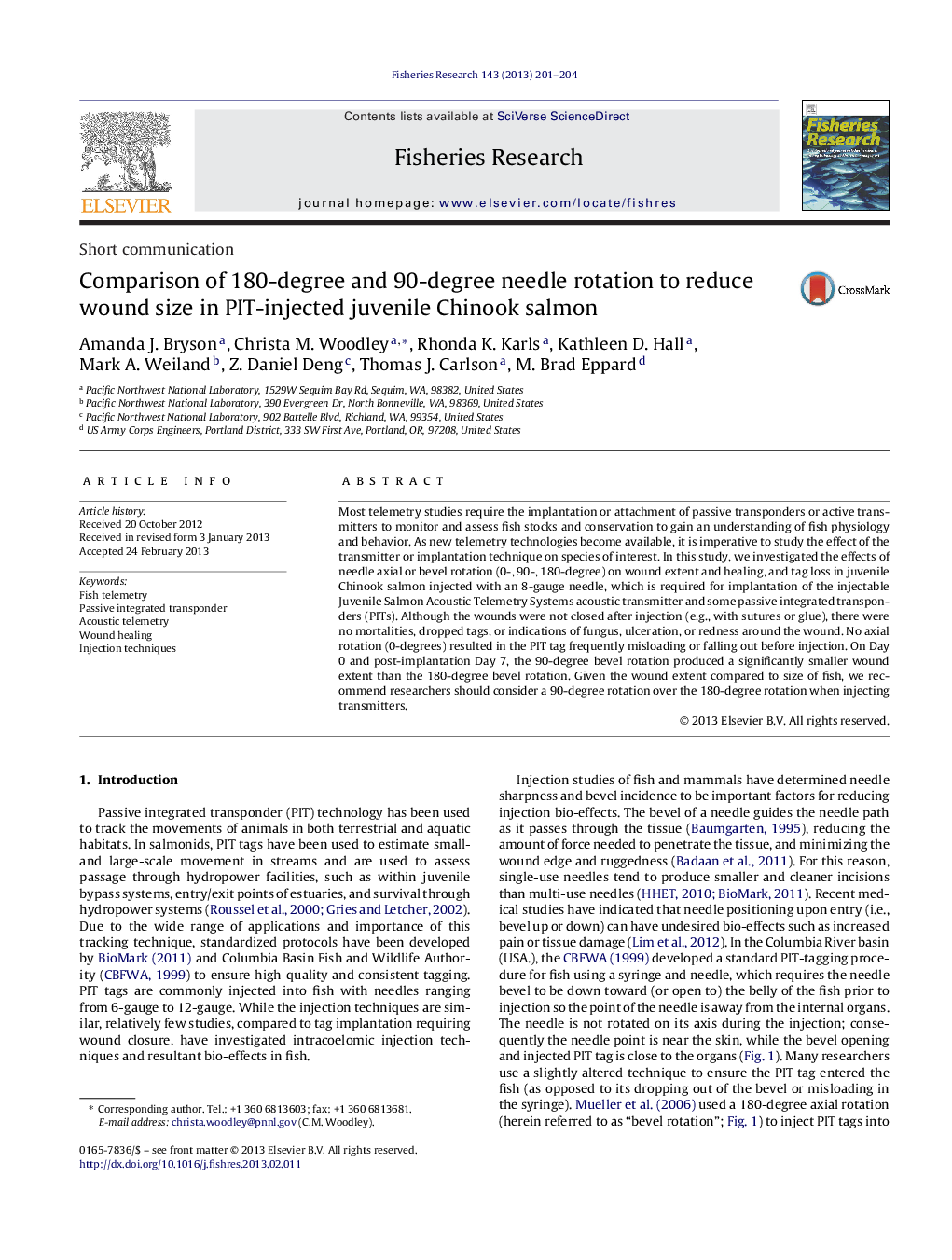| Article ID | Journal | Published Year | Pages | File Type |
|---|---|---|---|---|
| 4543174 | Fisheries Research | 2013 | 4 Pages |
Most telemetry studies require the implantation or attachment of passive transponders or active transmitters to monitor and assess fish stocks and conservation to gain an understanding of fish physiology and behavior. As new telemetry technologies become available, it is imperative to study the effect of the transmitter or implantation technique on species of interest. In this study, we investigated the effects of needle axial or bevel rotation (0-, 90-, 180-degree) on wound extent and healing, and tag loss in juvenile Chinook salmon injected with an 8-gauge needle, which is required for implantation of the injectable Juvenile Salmon Acoustic Telemetry Systems acoustic transmitter and some passive integrated transponders (PITs). Although the wounds were not closed after injection (e.g., with sutures or glue), there were no mortalities, dropped tags, or indications of fungus, ulceration, or redness around the wound. No axial rotation (0-degrees) resulted in the PIT tag frequently misloading or falling out before injection. On Day 0 and post-implantation Day 7, the 90-degree bevel rotation produced a significantly smaller wound extent than the 180-degree bevel rotation. Given the wound extent compared to size of fish, we recommend researchers should consider a 90-degree rotation over the 180-degree rotation when injecting transmitters.
► Three degrees of needle rotation were examined for effects in Chinook salmon. ► Mortality, tag loss, wound extent, healing, and infection indicators were measured. ► There were no mortalities, tag loss, or indications of infection. ► The 90-degree needle rotation through Day 7 produced the smallest wound extent. ► Healing occurred by Day 7 and progressed by Day 14 for 90- and 180-degree rotation treatments.
